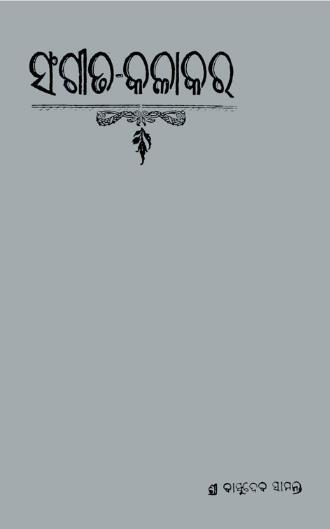In the rich tapestry of Odia literature, the year 1929 saw the publication of Sangita Kalakara, a significant prose work by the noted author Basudeba Samant. This book serves as a vital reflection on the world of music and art while simultaneously offering insights into the culture and artistic traditions of Odisha. As a prose narrative, Sangita Kalakara stands out for its ability to interweave aesthetics with cultural commentary, making it a noteworthy contribution to the literary landscape of its time.
Diving into the depths of musical expression, Basudeba Samant employs an eloquent and engaging writing style that captivates readers from the very first page. The book delves into various aspects of music, exploring its intricate forms, historical significance, and the role it plays in the spiritual and emotional lives of people. Samant’s passion for music is palpable, reflected in his vivid descriptions and thoughtful analyses, which invite readers to appreciate the nuances and beauty of the art form.
At the heart of Sangita Kalakara is an exploration of the cultural heritage of Odisha. Samant beautifully captures the symbiotic relationship between music and the regional identity, highlighting traditional musical practices, folk songs, and classical compositions that have evolved in the region. By bringing these elements into focus, the author not only pays homage to the rich artistic traditions of Odisha but also underscores the importance of preservation and appreciation of regional arts in a rapidly changing world.
One of the key strengths of Sangita Kalakara is its thoughtful critique of the contemporary music scene of the late 1920s. Samant addresses the challenges faced by traditional musicians and artists, grappling with the influences of modernity and commercialization. He articulates a sense of longing for a deeper connection to authentic music, encouraging a return to the roots of Odia musical traditions. This reflective commentary is strikingly relevant even today, as artists continue to navigate the tensions between tradition and innovation.
The prose style of Samant is both lyrical and accessible, allowing readers to engage deeply with the content without feeling overwhelmed. His ability to articulate complex ideas in a straightforward manner makes the book appealing to a wide audience, from music enthusiasts to casual readers with a curiosity about the arts. The result is a compelling narrative that educates while it entertains.
Moreover, Sangita Kalakara serves as a platform for broader discussions about identity, culture, and social values intertwined with musical expression. Samant emphasizes how music reflects societal changes, carries stories of the people, and acts as a vehicle for social commentary. This perspective fosters an appreciation for the arts as a lens through which we can understand and engage with the world around us.
The impact of Basudeba Samant’s work is significant, particularly in its role as a cultural artifact. By documenting and analyzing the musical traditions of Odisha, Sangita Kalakara contributes to the preservation of local heritage in literature. It provides future generations with insights into the artistic landscape of the past, ensuring that the rich legacy of Odia music and culture continues to thrive.
Books Info
| Books name | Sangita Kalakara / ସଂଗୀତ କଳାକାର |
| Author | Basudeba Samant |
| No Of pages | 257 |
| Publisher | NA |
| Publication | 1929 |
| Printed At | The Satyabadi Press |
| Distributor | NA |

